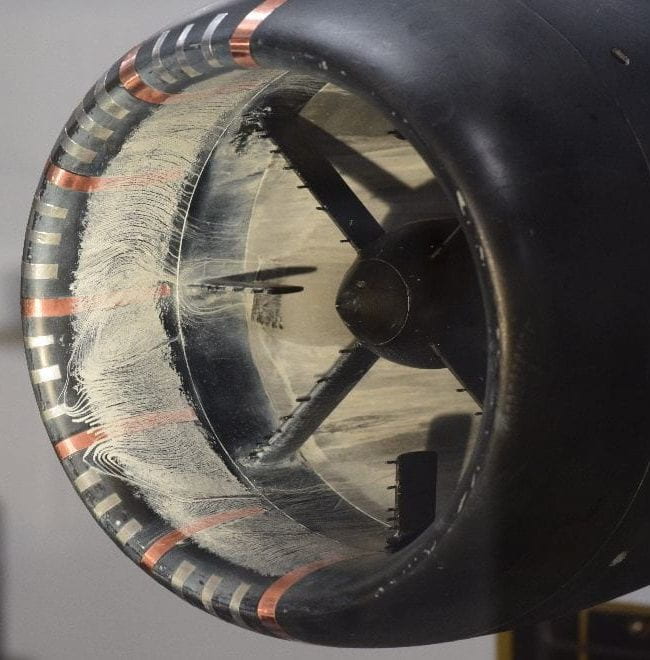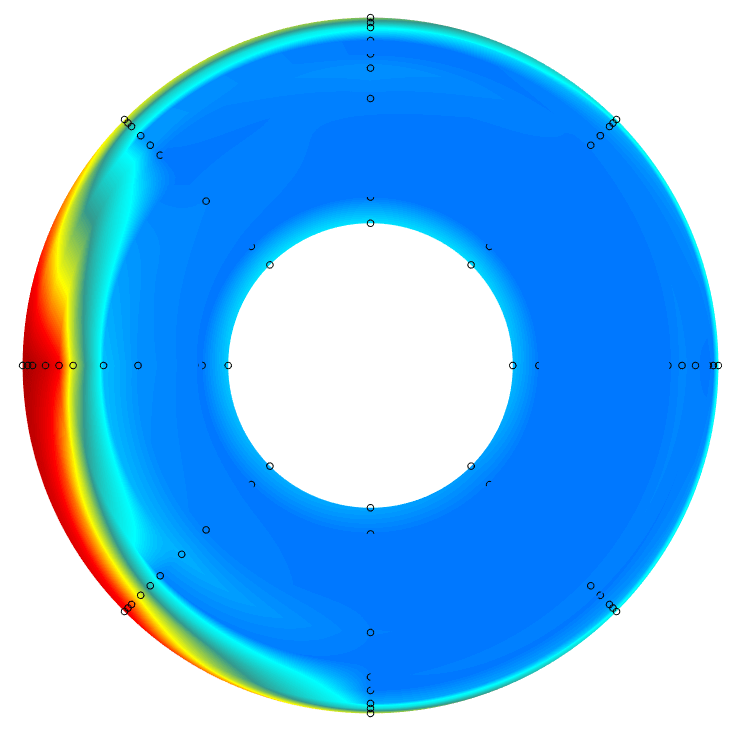
Aircraft nacelles must be designed to comply with Federal Aviation Regulations (FARs) during all stages of the flight including takeoff/landing and cruise. To accommodate flight in a crosswind during takeoff/landing, the nacelles must be oversized to withstand detrimental aerodynamic effects such as flow separation and distortion. This results in nacelles with increased weight and drag leading to lower overall efficiency during cruise which takes up the majority of the flight time. Research in the Fluid Mechanics Research Laboratory at Georgia Tech focuses on wind tunnel investigations of the fundamental flow mechanisms by which crosswinds negatively impact the nacelle flow in takeoff/landing, and the development of active aerodynamic flow control (AFC) technologies to overcome and mitigate these adverse effects. Nacelles in crosswinds can experience the formation of three different detrimental flow artifacts: inlet flow separation, a fuselage vortex, and a ground vortex. The inlet flow separation visualized using surface oil flow visualization in Figure 1 can produce vortex shedding off the separation bubble. These vortices can then interact with the compressor blades leading to potential damage. Further, if this separation bubble is ingested, the engine can stall due to the lack of combustible air. This separation also increases the total pressure losses experienced in the inlet (Figure 2). With increased losses, the engine power must increase in order to achieve thrust similar to flow in the absence of cross flow.

AFC is achieved using novel fluidic actuation on the nacelle’s surface by fluidically oscillating jets and autonomous ambient air bleed which produces a virtual inlet surface and has already demonstrated substantial performance enhancement in crosswinds. Current work focuses on the development of methodologies for implementation of these AFC techniques during flight to achieve optimal performance in changing aerodynamic conditions. It is anticipated that these AFC technologies will enable the design of advanced, compact nacelles that are FAR-compliant. These nacelle designs will lead to significant savings in weight and drag and will therefore contribute to substantial fuel savings and lower emissions in flight. More importantly, these designs will enable the development of new nacelles for commercial hybrid electric aircrafts and help reduce the carbon footprint of the future aircraft industry.
Supported by The Boeing Company and NSF Graduate Research Fellowship Program
